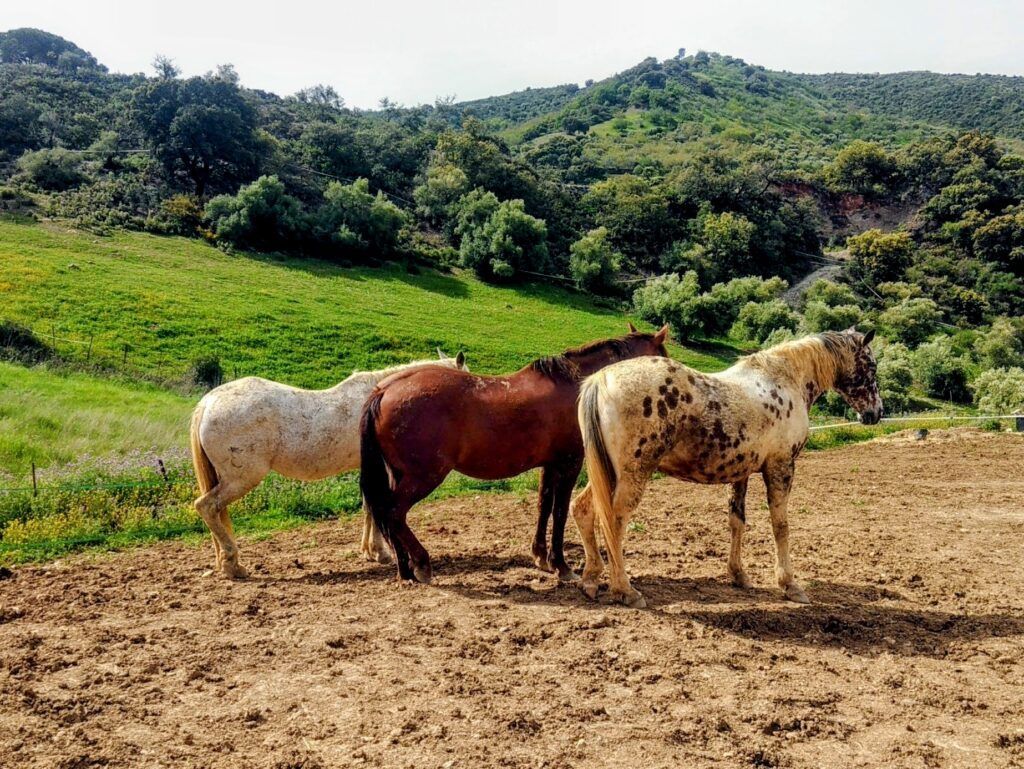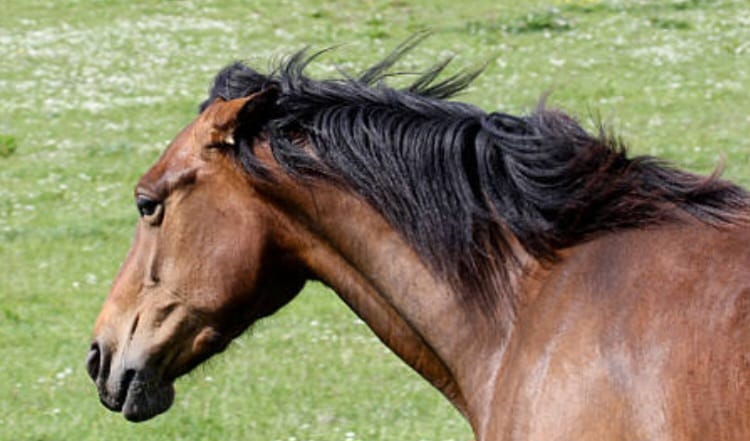❓Do you know the difference between positive reinforcement and negative reinforcement?
❓Do you know of other force-free techniques?
❓Do you know what happens when an aversive training method and a force-free training method are mixed together?
❓Would you recognise which technique/s are being used in training?
❓Do you know why each method works?
❓Do you know the emotional effect each technique has on the animal?
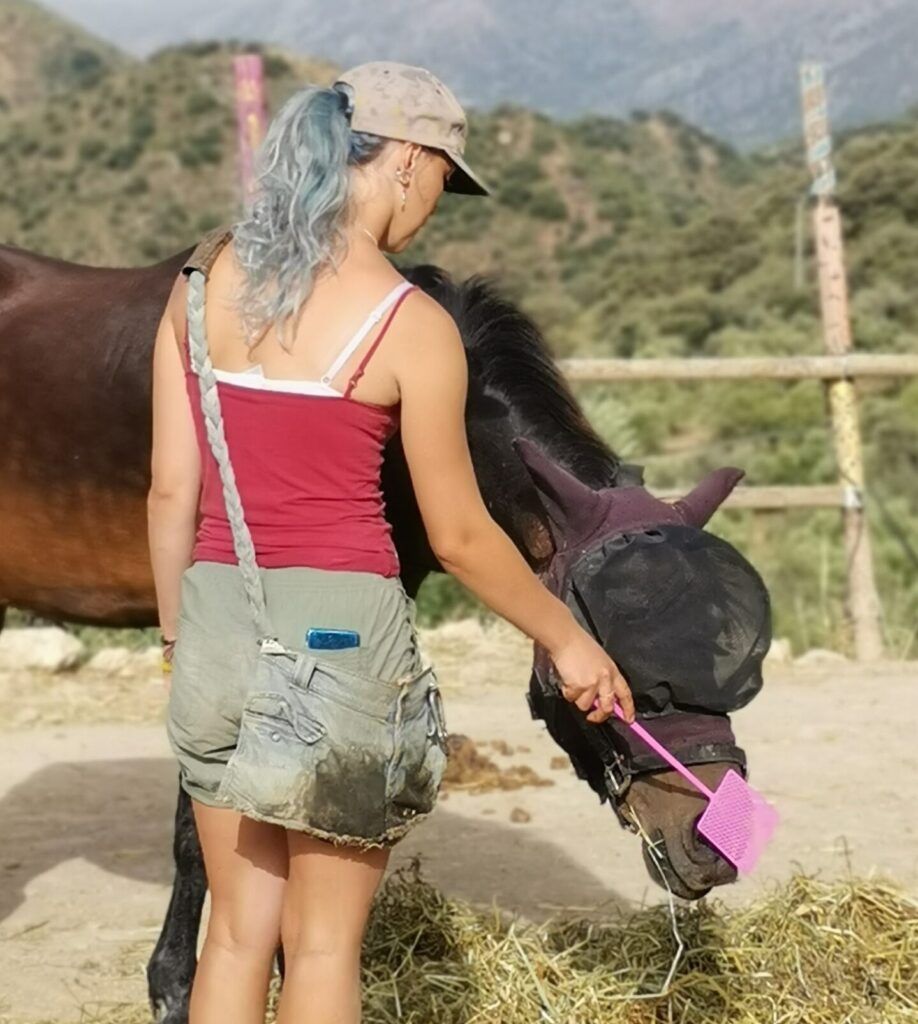
Above is a horse being presented with a target to touch with his nose that will eventually lead on to movement or consent training. He knows when he touches the target nice things will happen. He is relaxed because he was previously trained in protective contact; has *counter-conditioned to the human; has forage available; and has a big bag of training food. THIS is what POSITIVE REINFORCEMENT looks like.
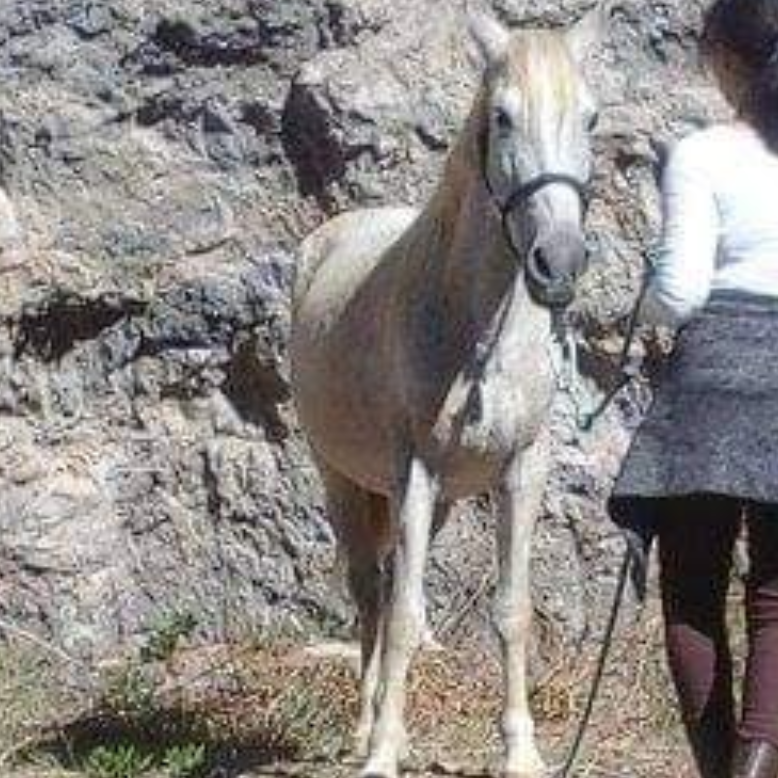
The horse above has been asked to walk backwards by the human by first pointing their finger; then wriggling the rope – which is connected to the halter, getting firmer and firmer making it feel very uncomfortable for the horse until she steps back. Then they stop and relax. The horse feels relieved as the aversive stimulus stops, but you can see by her face she is still p*s*ed. Next time the human points their finger, the horse will step back as this has become an aversively conditioned cue. THIS is what NEGATIVE REINFORCEMENT looks like.
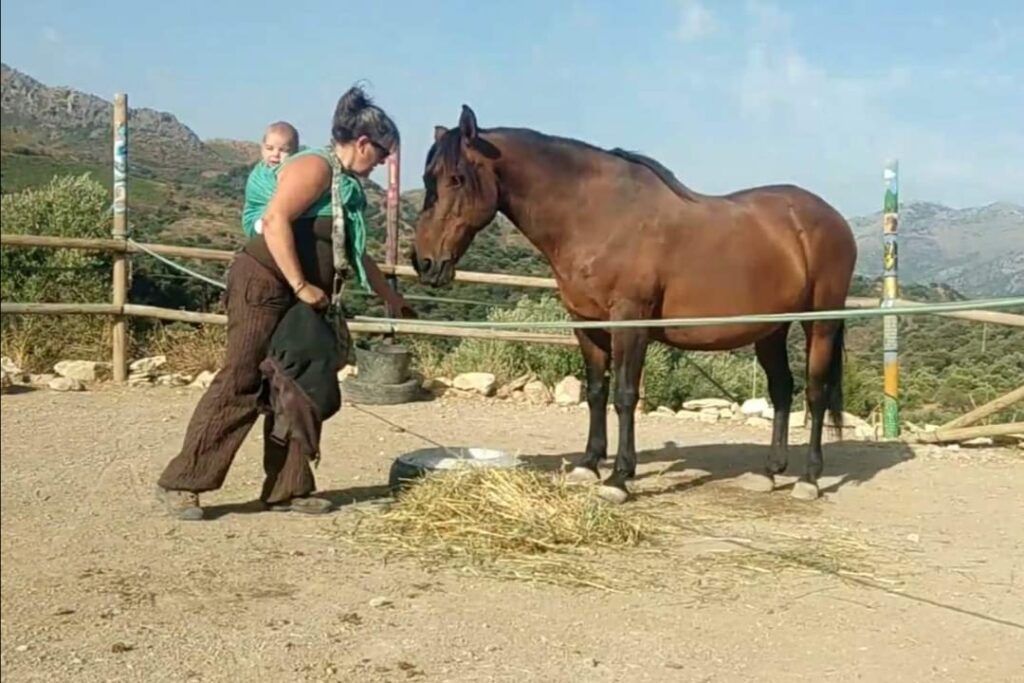
📷 This horse above is being presented with a fly mask, which she was fearful of because of previous forceful training methods. She is in protective contact (behind a barrier), and is relaxed with forage available as well as a big bag of training food. THIS is what *COUNTER CONDITIONING looks like, which is a DIFFERENT FORCE-FREE TRAINING METHOD to +R because the horse is just starting to make nice associations to the stimulus (mask) and doesn’t actually have to DO anything, so nothing is being reinforced. Her emotions are changing. It is used in conjunction with SYSTEMATIC DESENSITISATION which is ANOTHER FORCE-FREE METHOD that means very small exposures that don’t cause a reaction, which is very important so that the stimulus does not become aversive. Imagine how you may feel if I dropped a spider on your head, then gave you chocolate. Would you be any less scared of the spider?
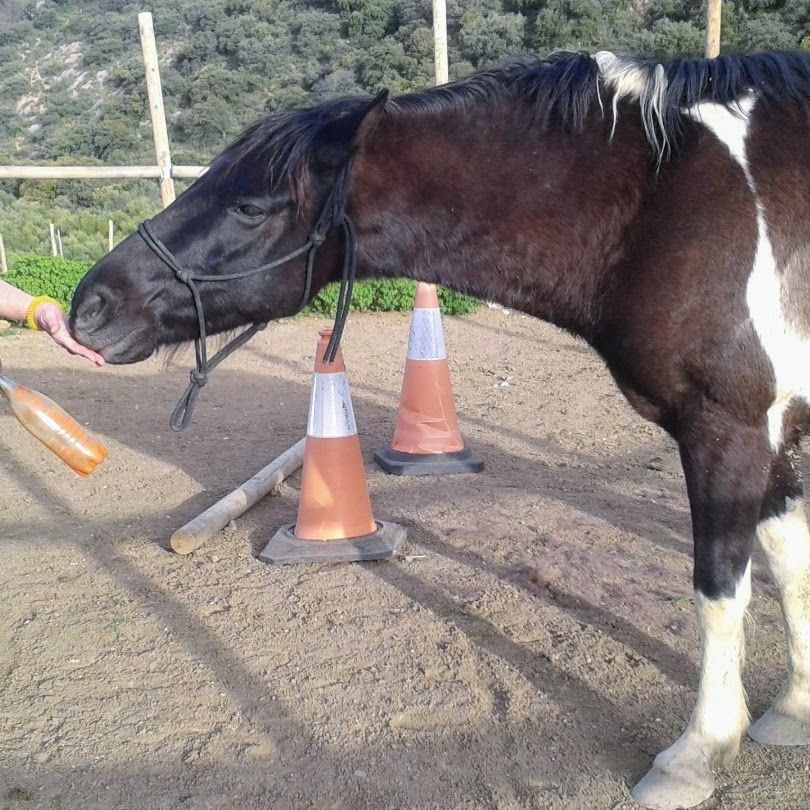
Above is a horse who is standing a distance away from the human, but very cautiously leaning in to get a treat from their hand. He is not relaxed, but wary. He is not obedient, but avoids something aversive that happened before, yet he still wants the food. He has the halter on, but no rope attached – it is not necessary because the halter is already connected to something aversive. You can see the target in the trainer’s hand to target his nose, and now he’s being rewarded for touching it. Imagine how he must feel with the food being held out, yet at any moment he will probably get a push or a poke to warn him not to come too close. THIS is what MIXING can look like
Tell me more!
POSITIVE REINFORCEMENT (+R) is when you add something that the horse values, e.g. treats or scratches (but not all horses actually like scratches despite the owner wanting them to or thinking they do).
And the addition of this nice thing makes the horse want to repeat what he did last time in order to get it again, which means it is being reinforced.
Positive is not in the emotional sense. It means addition. +R = add something to reinforce a behaviour. Or gain something appetitive to make the behaviour directly before it happen more.
NEGATIVE REINFORCEMENT (-R) is to take something away that the horse VALUES being removed in order for him to repeat the behaviour next time – so it is still reinforced.
By default it must be something that the horse finds horrible/aversive that is taken away in order for him to value it being removed.
For example
If someone is pressing on the horse’s nose/chest it is aversive. So he learns that when he backs off he ESCAPES from this horrible thing as it stops. Next time when he feels the lightest of touches there, or hears the ‘back’ word which is now an aversively conditioned cue, he knows what will happen next, so he backs up to AVOID it from happening again.
So what?
The problem is that the aversive is being applied by the human! Therefore WE are the aversive. If you put a whip on the floor the horse probably won’t be scared of it nor move away. It is only when it is connected to the human that it becomes a problem – if you pick it up, even if you don’t use it, it may make the horse move because the horse has learnt what comes next if he doesn’t.
That same concept applies to ALL aversive or aversively conditioned stimuli that you apply to the horse or use during training.
So emotionally he feels the SAME if you actually apply the aversive; if you just threaten to apply it; or if he thinks you may apply it. THAT’S HOW IT WORKS.
For example
- Using a word or sound to walk before you squeeze your legs
- Putting your hand on his side whilst grooming to move over
- Saying woe before you use your reins
- Pointing a finger to direct from the floor if it has been trained by following up with a push/drive/flick/poke
- ‘Using your seat’ when it’s followed by squeezing the reins in order to train halt, slow down, or collection
- Even bending over before picking up his hoof to clean it.
They are all predictors of something aversive, so are aversively conditioned cues that he has learnt how to avoid or escape from to seek release (relief), which leads to the behaviour we are looking for.
How about if we follow it with something nice?
Now imagine if someone threatens YOU with something. “Do this or else you will get it!”. You are like “Ok, I move – I remember what happened last time.” Then that person gives you something you like (the treats on top). Now repeat that daily for years…
If it were between humans they would be the abuser and the abused. Imagine the conflict that the horse feels. If we have to make ourselves aversive in order to train a horse, it’s not good. If we make ourselves aversive, then nice, then aversive, then nice – it’s a cocktail MIXING for disaster! This counts if there are any aversively trained behaviours and you also use food.
For example
- You could be training using -R when riding, such as squeezing with your legs or pulling your reins. Then when your horse does what you want you go give him a nice scratch or a treat. The behaviour was caused by the aversive.
- You could be training from the floor using an ‘extension of your arm’ (stick) to flick or poke, or threaten to. Then when he does what you want you say ‘good!’ and go give him a treat. The behaviour was caused by the aversive.
- You could be training using positive reinforcement, but with an aversively conditioned cue, such as a ‘walk on!’, which means to the horse ‘if I don’t walk something horrible will happen’. He walks on and you give him a treat. The behaviour was caused by the aversive.
- Part of your training may be positive reinforcement, such as targeting or capturing pace, and another part may be -R such as backing up with an aversive stimulus or aversively conditioned cue; or riding with aversively conditioned cues. The horse wants the food, but wants to avoid anything bad happening which causes conflict.
You may find when mixing, initially, desired behaviours get stronger. But it’s probably a matter of time before your horse starts showing aggression or displeasure because of the emotional conflict he is experiencing. Then you either have to up your aversives to regain control or a perceived leadership or respect, or decide it’s time to make a change…
There are other ways to ask your horse to move where he doesn’t think “Oh no, I’d better do this or I’ll get it!”. But instead he thinks “Great, I want to do that because it feels wonderful when I do! Yeah I’ll do that again with joy”.
Instead of him thinking “I’d better go over there because it is going to get uncomfortable here”, he will think “I will go over there because it is nice over there”.
I am passionate about behaviour change science and force-free training as part of the Horse Charming professional team, and there are many more ways to apply FORCE-FREE techniques than the examples above.
If you need support with your own horse and would like information about distance coaching in practical application…
Or if you would like to apply for our programme working in our sanctuary in Spain to train with our horses with Force-free techniques…
Or if you have horses or dogs, or are passionate about animals and want to learn more about the science of behaviour change and would like to register for our 12-week theory course run by Max Easey…

